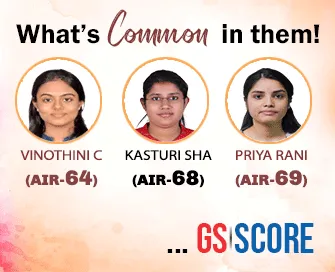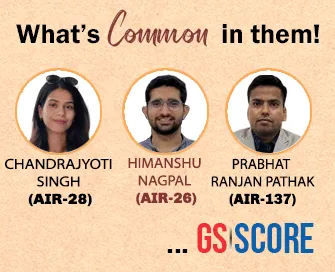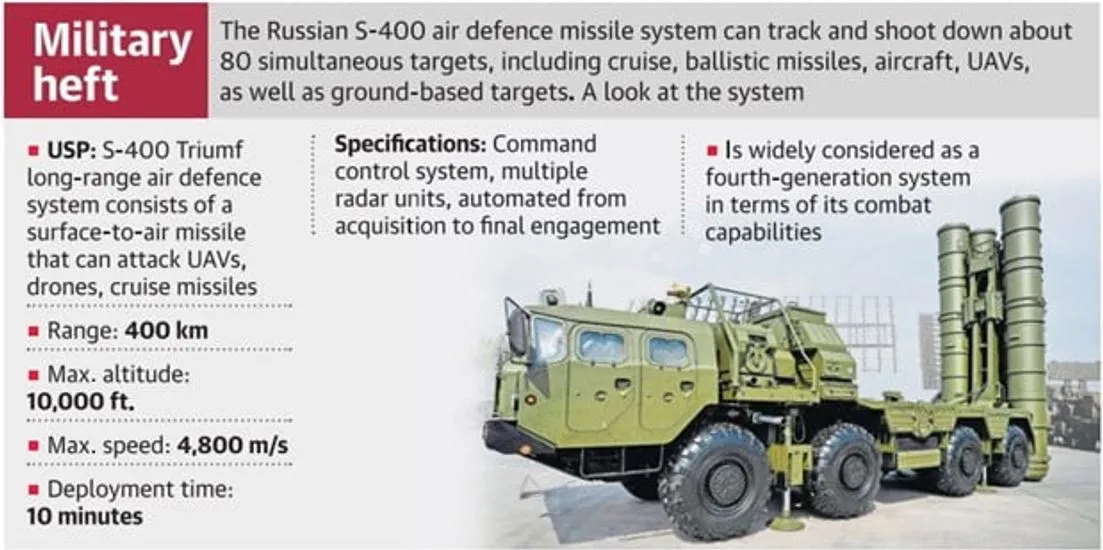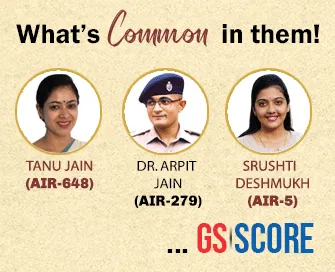

9th May 2025 (11 Topics)
Mains Issues
Context
The Department of Economic Affairs (DEA), Ministry of Finance, has officially released the draft framework, marking a critical step in building a structured and credible climate finance system in the country.
What is the Climate Finance Taxonomy?
- A climate finance taxonomy is a classification system that defines what counts as a “green” or “climate-aligned”
- It helps governments, investors, and businesses identify and prioritize financial flows toward activities that support climate change mitigation (reducing emissions) and adaptation (adjusting to climate impacts).
- India’s taxonomy is being developed in line with the Union Budget 2024-25 announcement and is guided by India’s national climate goals, such as:
India’s National Climate Goals
|
- Objectives: The taxonomy aims to:
- Facilitate finance for mitigation (reducing emissions),
- Support adaptation (resilience to climate impacts),
- Enable transition of hard-to-abate sectors (like steel, cement),
- Prevent greenwashing (false green claims),
- Align with India's development and energy security goals.
- Principles Guiding the Taxonomy: It is based on eight key principles, such as:
- Alignment with India’s climate goals and development priorities
- “Do No Significant Harm” to other environmental/social objectives
- Support for transition pathways (especially in complex or carbon-intensive sectors)
- Indigenous technologies and domestic innovation
- Proportional support for MSMEs
- Flexibility and interoperability with international frameworks
- Emphasis on science-based and measurable outcomes
Why is India developing its own Taxonomy?
While several global taxonomies exist (e.g., EU Taxonomy), India needs a customized framework for several reasons:
- Context-Specific Needs: India is a developing country with pressing developmental priorities like energy access, job creation, and industrial growth.
- India’s climate finance gap is massive: Over USD 2.5 trillion needed by 2030 (only for NDC targets). Green finance currently makes up just 3% of total FDI (Climate Policy Initiative, 2022). IFC estimates USD 3.1 trillion climate-smart investment potential in India by 2030, led by:
- Electric vehicles: USD 667 billion,
- Renewables: USD 403.7 billion,
- Green buildings, water management, and climate-resilient agriculture.
- Just Transition: The taxonomy must balance climate ambition with equity and affordability.
- Attracting Finance: A clear taxonomy builds investor confidence and encourages both domestic and international green finance flows.
- Avoiding Greenwashing: It ensures that only genuinely climate-supportive activities get labelled as “green,” avoiding misleading claims.
Global Alignment
- Many countries have either started to work on their taxonomy or finalised one. South Africa, Colombia, South Korea, Thailand, Singapore, Canada, and Mexico are some of the countries which have developed taxonomies. The European Union has done this as well.
- India’s taxonomy is informed by international practices (like the EU, China, South Africa, and ASEAN taxonomies), but it is adapted to Indian needs.
- It acknowledges that developing countries need transition periods, and hence includes “transition” and “enabling” categories not emphasized in all global taxonomies.


Prelims Articles
Context
Robert Francis Prevost, 69, has become the 267th occupant of the throne of St Peter and he will be known as Leo XIV. He is the first American to fill the role of pope. Although American by birth, Prevost has strong ties to Latin America, particularly Peru, where he served as a missionary and church leader for many years.
About
- The Pope is the spiritual leader of the Roman Catholic Church, which has over 3 billion followers worldwide.
- He also holds the title of Bishop of Rome and is considered the successor to Saint Peter, one of Jesus Christ’s apostles.
- The Roman Catholic Church is the largest denomination within Christianity. This means the papacy plays a significant role in how Christianity is perceived globally.
- The office of the pope is referred to as the
- The Pope is the supreme authority in doctrinal, moral, and administrative matters within the Church.
- He presides over the Holy See, the central governing body of the Church, and the Vatican City State, a sovereign city-state enclave within Rome.
- Popes are elected by a conclave of cardinals—senior church officials—who gather in the Sistine Chapel.
- The elected pope traditionally adopts a new papal name, symbolising spiritual rebirth and continuity.


Prelims Articles
Context
India and Pakistan are witnessing heightened military tensions following Pakistan's failed drone and missile attacks on Indian bases, and India's retaliatory strikes under Operation Sindoor. This has renewed focus on how India formally declares war, especially given the absence of explicit constitutional provisions for it.
What constitutes a ‘war’?
- Under international law, a “war” is typically defined by:
- Sustained hostilities between states
- Use of armed force
- Violation of territorial sovereignty
- The UN Charter allows use of force only in:
- Self-defence (Article 51)
- UNSC-authorised actions
- India usually frames military actions as counter-terror operations or acts of self-defence to maintain strategic and diplomatic space.
Is a Formal Declaration Required?
- No. India does not have a specific law or constitutional article that defines or mandates a formal declaration of war.
- Most Indian military engagements—including 1965, 1971, and Kargil—did not involve a formal war declaration.
- Pas Wars: In major military conflicts, India never issued a formal war declaration:
- 1947–48 (First Kashmir War): Responded after the accession of J&K; no war declaration.
- 1962 (India-China War): Chinese offensive; India reacted without a formal declaration.
- 1965 (India-Pakistan War): Triggered by Operation Gibraltar; both sides escalated without formal declaration.
- 1971 (Bangladesh Liberation War): Initiated after Pakistan's air strikes; no formal declaration.
- 1999 (Kargil War): A limited conflict under Operation Vijay; no declaration from either side.
- Constitutional and Legal Framework for War in India
|
Aspect |
Provision / Authority |
|
Supreme Commander of Armed Forces |
President of India (Article 53(2)) |
|
Actual War Decision-Making |
Union Cabinet, led by Prime Minister (Article 74) |
|
Constitutional Mechanism Closest to War Declaration |
Article 352 – National Emergency on grounds of “war” or “external aggression” |
|
Parliament’s Role |
Ratifies Emergency Proclamation within 1 month, continues it every 6 months by special majority |


Prelims Articles
Context
The Competition Commission of India (CCI) has introduced the Competition Commission of India (Determination of Cost of Production) Regulations, 2025, aiming to modernize the assessment of predatory pricing, especially pertinent in the evolving digital economy.
What is Predatory Pricing?
- Predatory pricing involves a dominant company setting prices below its production costs to eliminate competitors and establish market dominance.
- Under Section 4(2)(a)(ii) of the Competition Act, 2002, this practice is deemed abusive when it aims to reduce competition or eliminate competitors.
Key Features of the 2025 Regulations
- Primary Benchmark – Average Variable Cost (AVC): AVC is adopted as the standard measure for assessing predatory pricing, serving as a proxy for marginal cost. This approach aligns with international best practices and provides a consistent basis for evaluation.
- Flexibility with Alternative Cost Measures: Recognizing the diversity of industries, the CCI may consider other cost concepts such as:
- Average Total Cost (ATC)
- Average Avoidable Cost (AAC)
- Long Run Average Incremental Cost (LRAIC)
- These alternatives allow for a nuanced assessment tailored to specific market dynamics.
- Sector-Agnostic Framework: The regulations are designed to be applicable across various sectors, including digital markets like e-commerce and quick commerce. This ensures adaptability to different industry structures and practices.
- Expert Involvement: To enhance accuracy, the CCI or the Director General may engage experts in cost determination. Parties under investigation can also request expert analysis, bearing the associated costs.
- Clarification of Cost Definitions: The regulations provide detailed definitions, such as LRAIC encompassing all variable and fixed costs, including sunk costs, directly or indirectly attributable to a product or service. In multi-product firms, it includes a proportionate share of common costs.
| Fact Box:
Competition Commission of India (CCI)
The Competition Act, of 2002:
|


Prelims Articles
Context
India's Maternal Mortality Ratio (MMR) has declined to 93 per 1,00,000 live births in 2019–21, continuing a downward trend in recent years. This has been reported by the Registrar General of India using data from the Sample Registration System (SRS).
India’s Maternal Mortality Situation (Key-Findings)
- Declining National Trend: MMR has reduced from 97 (2018–20) to 93 (2019–21) per 1,00,000 live births. The report shows steady improvement from 103 in 2017–19.
- Age-wise Impact: Highest maternal deaths occurred in the 20–29 years age group (prime reproductive age). Second highest in the 30–34 years age group.
- States with High MMR (per 1,00,000 live births):
- Madhya Pradesh – 175
- Assam – 167
- Uttar Pradesh – 151
- Odisha – 135
- Chhattisgarh – 132
- West Bengal – 109
- Haryana – 106
- Southern State Performance:
- Karnataka: MMR reduced to 63, but still highest among southern states.
- Other southern states likely performing better (not individually listed in this data).
- Global Benchmark (UN SDG Target): India’s current MMR of 93 is still above the SDG target of less than 70 per 1,00,000 live births.
- Cause of Death (as per WHO): Most maternal deaths are due to preventable causes during pregnancy, childbirth, or shortly after delivery.
- Causes include complications like hemorrhage, infection, high blood pressure, unsafe abortion, etc.
- WHO 2023 Global Concern:
- Over 700 women die daily worldwide from pregnancy-related causes.
- 90% of maternal deaths happen in low- and lower-middle-income countries.
What is Maternal Mortality Ratio (MMR)?
- Definition (WHO): MMR is the number of maternal deaths per 100,000 live births in a given time period.
- Maternal Death: The death of a woman while pregnant or within 42 days of termination of pregnancy, from causes related to or aggravated by pregnancy or its management—not from accidental or incidental causes.
Maternal Health Schemes under NHMNHM is central to India’s maternal health initiatives through its comprehensive RMNCAH+N strategy—covering Reproductive, Maternal, Newborn, Child, Adolescent Health and Nutrition.
|


Prelims Articles
Context
The Bihar government launched the 'Mukhyamantri Neera Samvardhan Yojana', to support toddy tappers and promote Neera as a non-alcoholic health drink. The new scheme provides financial incentives to both tappers and palm tree owners.
About 'Mukhyamantri Neera Samvardhan Yojana'
- Mukhyamantri Neera Samvardhan Yojana (2025) aims to promote Neera as a sustainable livelihood alternative to toddy for marginalized communities like the Pasi Dalit community.
- Implemented by: Prohibition, Excise and Registration Department & Jeevika (Bihar Rural Livelihoods Promotion Society)
- Toddy Season: April to July
What is Neera?
|


Prelims Articles
Context
The cardamom-growing regions of Idukki district in Kerala have recently witnessed a significant infestation of small snails, which are causing extensive damage to cardamom crops.
About
- Green cardamom, often called the "Queen of Spices," is one of the world’s most valuable spices, ranking just after saffron and vanilla.
- It belongs to the Zingiberaceae
- It is a high-value cash crop and a major component of India’s spice exports.
- The seeds from Elettaria cardamomumare used to make the commercial green cardamom spice, widely used in cooking, sweets, and beverages.
- As a result, these discoveries hold economic significance as they may lead to better
- It is one of the three most economically important species in the ginger family.
- It is native to the evergreen rain forests of Western Ghats in South India.
- Major Cardamom producing Indian states: Kerala, Sikkim, Nagaland, Arunachal Pradesh, Karnataka.
- Other major cardamom producing countries: Gautemala, Srilanka, Thailand and Cambodia.
- Soil and climate: Thick shady areas with loamy soil are ideal for cultivating cardamom. This crop can be grown at an elevation from 600 to 1500 m. It is grown in forest loamy soils which are usually acidic in nature with a pH range of 5.0 – 6.5
- Season: June – December is found to be optimum.
|
About Snail Attack
|


Prelims Articles
Context
The Russian S-400 system and the Rafale Jets with SCALP Missiles — these twin weapons have proved to be the aces for India in Operation Sindoor and in the ongoing conflict with Pakistan.
About S-400 System
- The S-400 is a modern long-range surface-to-air missile (MLR SAM) system developed by Russia.
- It is the world’s premier long-range air defence weapon, capable of tracking and engaging multiple aerial targets within a range of up to 600 kilometre.
- It is widely regarded as one of the most advanced and formidable surface-to-air missile (SAM) systems in the world.
- Introduced into service in 2007, the S-400 is designed to provide a multi-layered air defence shield capable of intercepting a broad spectrum of aerial threats, including fighter jets, ballistic and cruise missiles, drones and stealth aircraft.

India's air and missile defence systems:
|
- Key Components and Capabilities
- It has three components: Missile launchers, a powerful radar and a command centre. It can hit aircraft, cruise missiles and even fast-moving intermediate range ballistic missiles.
- The system integrates several advanced radars and missile launchers coordinated by a command and control centre.
- Its multifunction radar suite includes the 92N2E Grave Stone tracking radar and the 96L6 Cheese Board acquisition radar, which provide 360-degree surveillance and can detect targets up to 600 kilometres away. The S-400 can simultaneously track up to 300 targets and engage up to 36 threats at once.
- The S-400 employs four types of missiles to create a layered defence:
- 40N6: A long-range missile with a reach of up to 400 km, capable of intercepting high-value targets at great distances.
- 48N6: A medium-range missile effective up to 250 km.
- 9M96E and 9M96E2: Short to medium-range missiles with ranges between 40 and 120 km, designed to strike fast-moving targets such as fighter jets and precision-guided munitions.
- These missiles can engage targets flying at speeds up to Mach 14 (approximately 17,000 km/h) and at altitudes ranging from 10 metres to 30 kilometres, including ballistic missiles at the edge of space.
- Inside the Indian Air Force, it is termed as the ‘Sudarshan Chakra’ which can detect, track, and destroy a wide variety of airborne threats — from fighter aircraft, to UAVs and ballistic missiles.
- India procured 36 Rafale fighter jets since 2020 from France in a government-to-government deal, which significantly enhanced the air prowess of India, giving it an edge over the US made F-16 fighter jets with Pakistan.
- India had to fight a lot of pressure exerted by the US when India decided to procure the S-400 defence system since 2018 in a USD 5 billion deal with Russia.
India vs Pakistan: Military Power Comparison (2025)
|
Category |
India |
Pakistan |
|
Global Rank |
4th (Global Firepower 2025) |
12th |
|
Military Budget (2024) |
USD 86 billion (2.3% of GDP) |
USD 10.2 billion (2.7% of GDP) |
|
Total Personnel |
5,137,550 personnel |
1,704,000 personnel |
|
Combat Aircraft |
2,229 |
1,399 |
|
Combat Tanks |
3,151 |
1,839 |
|
Naval Assets |
293 (over 6,100 km coastline) |
121 (1,046 km coastline) |
|
Nuclear Weapons |
Both possess; India has longer-range, more diversified delivery systems |
|


Editorials
Context
India has conducted a series of air strikes under Operation Sindoor in response to the terror attack in Pahalgam, targeting terror camps not only in Pakistan-occupied Kashmir (PoK) but also inside Pakistan. This marks a sharp escalation in India’s counter-terror response and has triggered fears of a prolonged India-Pakistan conflict with wider implications for South Asia's regional peace and economic stability.
Strategic Context and Regional Security
- Shift in India’s Retaliation Doctrine: India’s recent actions signal a decisive shift from reactive to proactive counter-terrorism, targeting camps in both PoK and Pakistan—marking the operationalization of a new cross-border engagement threshold.
- Mutual Destruction and Limitations of War: A full-scale war is unlikely to be sustained by either India or Pakistan without grave economic and human costs, making prolonged escalation strategically irrational for both sides.
- Regional Challenge of Leadership Vacuum: South Asia suffers from a chronic shortage of visionary political leadership that can transcend historical animosities and foster a stable regional development framework.
South Asia’s Developmental Dilemma
- Illusion of Growth Without Neighbourhood Stability: India’s belief in decoupling economic rise from neighbourhood disputes has worked so far, but prolonged conflict risks derailing growth and increasing vulnerabilities.
- Pakistan’s Destabilisation Strategy: A weakened Pakistan may see economic sabotage through prolonged hostility as a strategic objective, potentially dragging India into a war of attrition that hampers development.
- Global Response and Limited Leverage: Unlike previous wars, current geopolitical alignments may not exert timely diplomatic pressure to de-escalate hostilities, increasing the risk of prolonged conflict.
The Abandoned Peace Framework and Policy Reckoning
- Collapse of Composite Dialogue Mechanism: The last serious peace initiative—the Manmohan-Musharraf formula (2000–2007)—sought LoC recognition and joint mechanisms, but has since been abandoned without an alternative.
- Geostrategic Reality of the LoC: Despite aggressive rhetoric, major powers like the US, Russia, and China effectively endorse the LoC as the de facto international border—a position rejected by hawks on both sides.
- Costs of Unilateral Regional Policy: India’s “neighbourhood-first” policy has gradually turned into a cost-imposition model, which although assertive, creates long-term strategic and diplomatic pushback from neighbours.
Practice Question
Q. Discuss how the India-Pakistan conflict impacts the strategic and economic stability of the South Asian region. In light of recent escalations, examine the viability of the Line of Control (LoC) as a permanent border and the role of regional leadership in restoring peace.

Editorials
Context
On May Day 2025, a thought-provoking advertisement by Ogilvy India reignited focus on child labour in India, drawing attention to the 7.8 million working children despite 35.6 million unemployed adults. Derek O’Brien’s article evaluates the gap between legal provisions and enforcement in addressing child labour, underscoring institutional apathy and socio-economic neglect.
THE GRIM REALITY OF CHILD LABOUR IN INDIA
- Data from UNICEF and PLFS (2018–19): Child labour in India ranges from 18 lakh (national definition) to 33 lakh (international definition). Nearly 50% of working children are engaged in family-based work, with the agricultural sector employing the most.
- Hazardous and exploitative sectors: Children work in unsafe industries like fireworks, glass, leather, brick kilns, and coal mines, often facing physical abuse, verbal threats, low wages, and lack of healthcare even in case of injury.
- Intersection with caste, poverty, and health: Children from disadvantaged castes or minority groups are more likely to be engaged in hazardous labour. Toxic exposure, poor hygiene, and infectious diseases are common, especially among undernourished and wasted children (India houses 50% of global wasted children).
LEGAL FRAMEWORK VS POOR IMPLEMENTATION
- Constitutional and legal safeguards: Article 24 of the Constitution prohibits employment of children under 14 in hazardous sectors. The Child Labour (Prohibition and Regulation) Amendment Act, 2016 further strengthened this framework.
- Weak enforcement and under-reporting: Despite the law, only 613 cases were registered under the Child Labour Act in 2021. A lack of gender-wise, urban-rural disaggregated data limits accurate policy response. The 2021 Census is still pending, compounding the data deficit.
- Ground-level violations continue unchecked: A 2023 rescue in Madhya Pradesh revealed 58 children, including 20 girls, working in a distillery, with 11-hour shifts, chemical burns, and no proper wages — highlighting systemic failure in enforcement mechanisms.
CHILD LABOUR, POVERTY, AND POLICY PARALYSIS
- Poverty both cause and consequence: As per ILO, poverty compels families to send children to work. In turn, child labour perpetuates generational poverty by disrupting access to education and nutrition.
- Government’s rhetorical commitment: In 2012, India claimed at the UN General Assembly that child labour eradication was a priority, combining strict enforcement with social upliftment — but little measurable progress has been seen since then.
- Need for a multi-pronged strategy: Tackling child labour demands a socio-economic approach: stronger implementation of laws, better access to schooling, nutrition, and livelihood support for families, especially in rural and backward areas.
Practice Question
Q. Despite strong constitutional and legal safeguards, child labour persists in India due to systemic implementation failures. Critically examine with reference to recent data, sectoral analysis, and socio-economic factors. Suggest a comprehensive strategy to eradicate child labour.

Editorials
Context
The Supreme Court of India has published asset declarations of its sitting judges on its official website. This step comes in response to recent controversies such as the seizure of unaccounted cash from the residence of a Delhi High Court judge, highlighting the urgent need for transparency and accountability within the judiciary.
Systemic Transparency Measures
- Asset Declarations as a Reform Tool: The SC’s initiative to publish judges’ asset details, including those of spouses and joint family members, aims to reinforce public trust and institutional integrity.
- Response to Public Pressure and Controversy: The move comes after the embarrassment caused by a corruption scandal involving Justice Yashwant Varma, and amid criticism of judicial opacity by Vice President Jagdeep Dhankhar.
- Collegium Transparency Enhanced: Alongside asset disclosures, the Supreme Court has also begun uploading detailed notes on judicial appointments, increasing transparency in the Collegium system.
Historical and Institutional Context
- Unfulfilled Earlier Attempts: Judicial asset declaration initiatives were first attempted in 1997 and 2009, but saw poor voluntary compliance from judges, reflecting systemic reluctance.
- Recommendations for Legislative Backing: The 2023 Parliamentary Committee report recommended mandatory annual asset returns for Supreme Court and High Court judges and creation of legal frameworks for disclosure.
- NJAC and the Institutional Autonomy Debate: The NJAC Act of 2014, which had Parliament’s support, was struck down in 2015, reigniting debates about the balance between transparency and judicial independence.
Accountability Challenges and the Road Ahead
- Lack of Legal Mandate: As of now, asset disclosure remains voluntary, making it dependent on judicial will rather than enforceable obligation, thus limiting its effectiveness.
- Public Faith and Institutional Legitimacy: Transparent disclosures serve as a deterrent to corruption and restore public confidence in the judiciary, especially in light of recent misconduct cases.
- Need for Comprehensive Reform: Beyond asset declarations, broader judicial reforms must address opaque appointments, disciplinary processes, and ethical codes to institutionalise accountability.
Practice Question
Q. Transparency in judicial conduct is fundamental to preserving the legitimacy of the judiciary in a constitutional democracy. In light of recent events and the Supreme Court’s decision to publish judges’ asset declarations, critically examine the need for institutionalised mechanisms to ensure judicial accountability.



